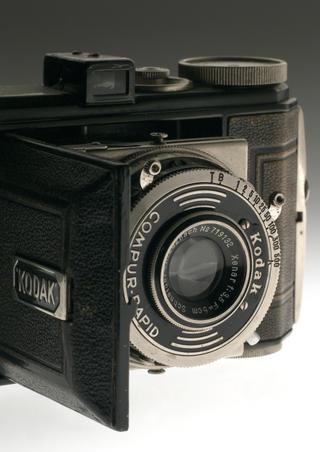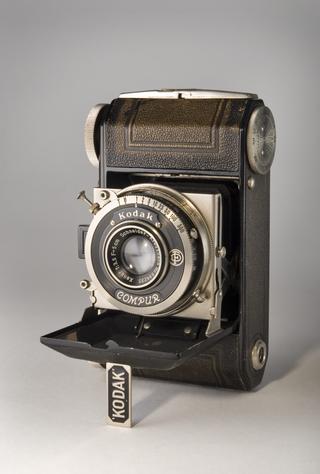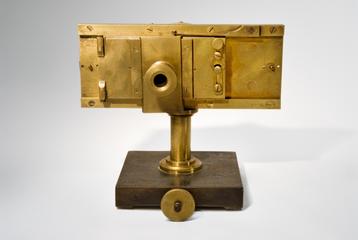
Baby Brownie Camera
- Made:
- 1930-1935 in United States








Eastman Kodak Baby Brownie camera.
Kodak Brownie cameras were some of the earliest affordable and easy to use cameras.
Although photography was invented in the first half of the 19th century, it was a complicated and expensive activity at first. In 1900, the American Kodak company introduced the Brownie, a cheap and simple box camera. The Brownie put photography into the hands of millions of everyday people for the first time, allowing them to easily take snapshots of their daily lives and their families and friends. The name is thought to have been a reference to cartoons of Brownies, a type of folklore spirit, in children’s books by Palmer Cox.
The Brownie was a huge success, with over 100,000 sold the first year of production, followed by millions of improved Brownie branded cameras over the following decades, which were manufactured in several countries, including Britain. Over the years Kodak produced many different models of Brownie, adding new features and using new materials. Although later model Brownies were quite different to the first ones, they continued to be quite simple cameras, affordable, and marketed to amateur photographers.
This is a Baby Brownie, one of the smallest cameras in the Brownie range. Introduced in the 1930s, the Baby Brownie was designed as a simple snapshot camera with only basic features and was marketed particularly at children. However, with a low cost of just 5-shillings and a stylish Art Deco style case, made out of modern Bakelite plastic, they became more widely popular with other people who wanted a small and easy to use camera.
Details
- Category:
- Photographic Technology
- Object Number:
- Y1989.47
- Materials:
- plastic (unidentified), metal (unknown) and glass
- Measurements:
-
overall: 71 mm x 71 mm x 84 mm,
- type:
- camera
- credit:
- Gift of Mr. S. Palmer




